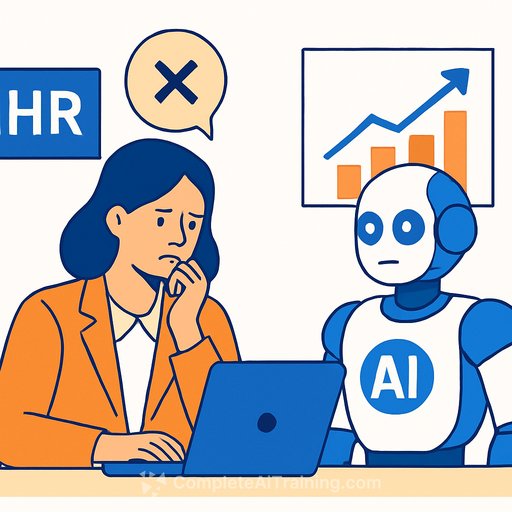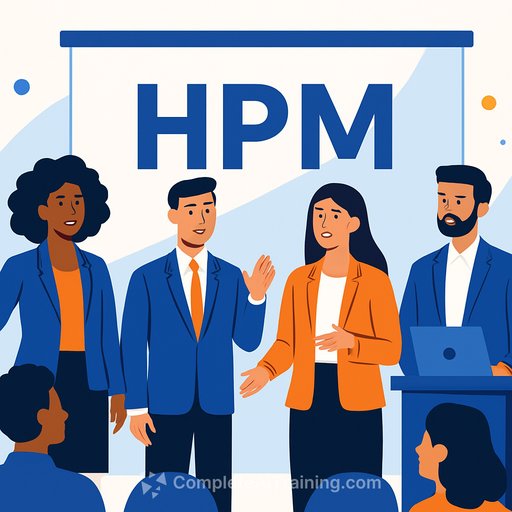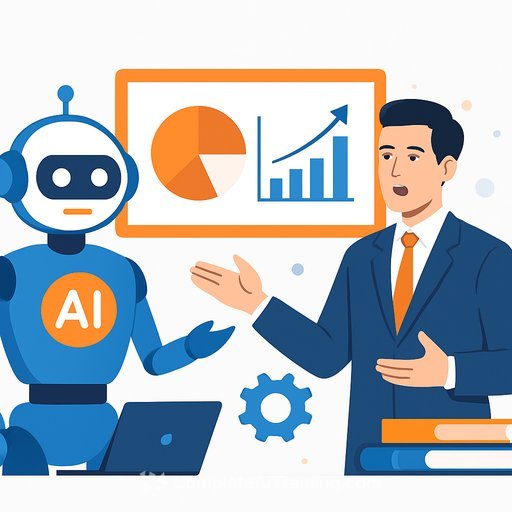Trust deficit - not job-loss fear - tops AI adoption barriers in Indian HR
A nationwide survey by Biz Staffing Comrade Pvt Ltd shows a clear signal: 59.1% of HR leaders say the biggest barrier to AI adoption is a lack of trust in AI-driven decisions. Communication and change management gaps follow at 27.3%. Leadership hesitation or unclear direction sits at 9.1%. Only 4.5% cited fear of job loss.
Translation: the blocker isn't employee insecurity. It's confidence, clarity, and execution.
What the data says
- 59.1%: Low trust in AI decision-making is the top barrier
- 27.3%: Insufficient communication and change management
- 9.1%: Leadership hesitation or lack of clarity
- 4.5%: Fear of job loss
These insights emerged from Biz Staffing Comrade's HR Leaders' Roundtable on "The Human Enterprise in an AI World," moderated by Achyuta Ghosh of HFS Research.
High ambition, low readiness: only 8% are scaling
- 8%: Fully prepared and scaling human + AI collaboration
- 40%: Partially prepared, experimenting in select functions
- 44%: Pilot stage with limited adoption
- 8%: Yet to start; still evaluating
As Jasvinder Bedi, Managing Partner at Biz Staffing Comrade, noted: the focus must move from intent to implementation. The opportunity is large, but speed, structure, and leadership clarity decide whether AI stays on slides or shows up in outcomes.
Trust is the bottleneck - here's how HR can fix it
- Make AI decisions explainable: publish model purpose, inputs, guardrails, and human override points.
- Stand up governance: clear approval paths, risk tiers, bias checks, and audit logs.
- Start with low-risk, high-visibility use cases (JD generation, screening summaries, FAQ bots) to build credibility fast.
- Measure accuracy, fairness, turnaround time, and stakeholder satisfaction - report monthly.
- Train managers on "AI with oversight," not "AI replaces judgment."
If you want a reference framework, see the NIST AI Risk Management Framework for pragmatic controls and practices. Read NIST AI RMF
Upskilling beats hiring (for most teams)
Leaders are shifting from "hire the skill" to "build the skill." 38% prioritize upskilling current employees on AI competencies. 25% are hiring AI/data specialists. 21% are restructuring roles for better human-machine collaboration. 16% say it's too early to call.
Puneet Arora, Managing Partner at Biz Staffing Comrade, summed it up: upskilling is a core business priority now. The win is a workforce that adapts, learns, and executes.
- Run a skills inventory (data literacy, prompt writing, workflow automation, privacy basics).
- Define role-based proficiency (HRBP, TA, L&D, Shared Services) and match to learning paths.
- Pair short courses with in-role projects (candidate screening co-pilot, internal mobility matching, policy Q&A bot).
- Set weekly practice: prompts, evaluation checklists, and bias spot checks.
Need structured paths by job family? Explore curated upskilling options here: AI courses by job
Legacy systems and enterprise debt are slowing you down
Automation is exposing process debt - not erasing it. Siloed data, manual approvals, and brittle integrations create friction that AI can't gloss over.
- Map the process before you automate it. Remove steps, merge approvals, standardize inputs.
- Fix data basics: consistent fields, ownership, retention rules, and access controls.
- Integrate cleanly with HRIS/ATS/LMS via APIs to reduce copy-paste loops.
- Create a backlog of "debt items" and fund it like a product roadmap.
Communication and change management: keep it simple and steady
- Explain "why this, why now, what changes, what stays human."
- Publish an AI usage policy: approved tools, sensitive data rules, escalation points.
- Set up an HR+IT+Legal AI Council to triage use cases and risks.
- Run office hours and short demos; collect feedback; iterate weekly.
Quarter-by-quarter plan for HR leaders
- 30 days: pick 3 use cases with clear ROI and low risk; define success metrics; establish governance and a review cadence.
- 60 days: launch pilots; train managers; report early wins; capture lessons; reduce process debt that blocks scale.
- 90 days: scale the best 1-2 pilots; publish a trust report (accuracy, time saved, bias checks); expand upskilling to adjacent teams.
Where AI delivers near-term value in HR
- Talent acquisition: JD drafts, sourcing summaries, candidate Q&A, interview guide creation.
- HR operations: policy chatbots, ticket triage, document generation, onboarding checklists.
- L&D: personalized learning paths, skills inference from roles, course outlines.
- Workforce planning: scenario models with human review and sign-off.
Bottom line
Trust, not fear, is the main hurdle. Build it with transparency, governance, and quick wins. Pair that with focused upskilling and a plan to pay down enterprise debt. Do that, and AI moves from slideware to daily workflow - where it belongs.
Your membership also unlocks:






